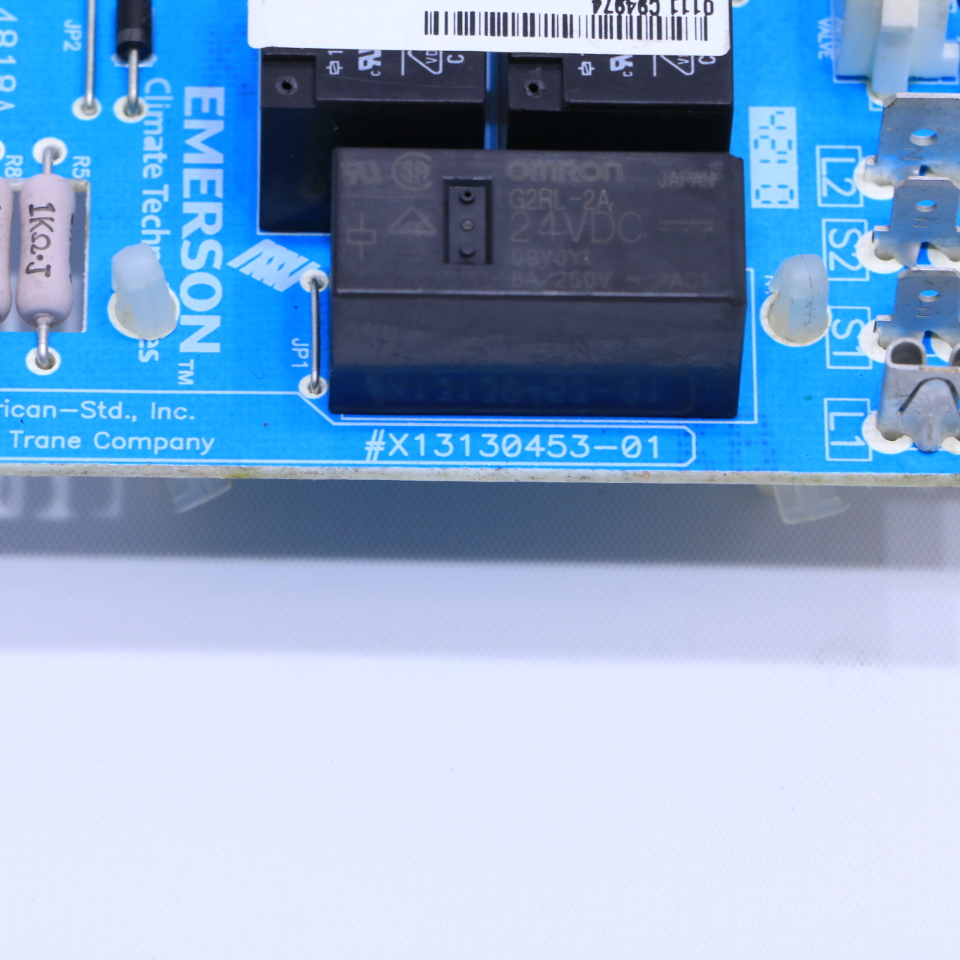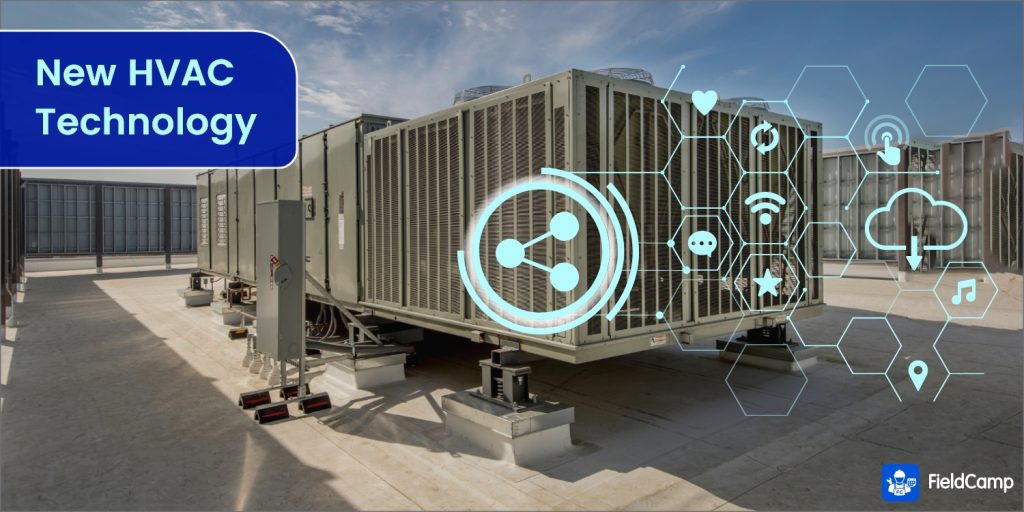Emerson Climate Technologies Control Board: HVAC System Management
Emerson Climate Technologies control boards are the brains behind efficient and reliable HVAC systems. These boards, crucial components in modern HVAC technology, manage and regulate the entire system’s operation, ensuring […]

Emerson Climate Technologies control boards are the brains behind efficient and reliable HVAC systems. These boards, crucial components in modern HVAC technology, manage and regulate the entire system’s operation, ensuring optimal performance and comfort. From monitoring temperature and humidity to controlling airflow and energy consumption, Emerson control boards play a pivotal role in maintaining a comfortable and energy-efficient environment.
Understanding the functionality and intricacies of these control boards is essential for HVAC professionals and homeowners alike. This article delves into the world of Emerson Climate Technologies control boards, exploring their purpose, types, programming, troubleshooting, and future trends.
Emerson Climate Technologies Overview
Emerson Climate Technologies is a global leader in the HVACR (Heating, Ventilation, Air Conditioning, and Refrigeration) industry, providing innovative solutions for commercial and residential applications. The company has a long history of innovation and excellence, dating back to its founding in 1890.
History of Emerson Climate Technologies
Emerson Climate Technologies’ roots can be traced back to the formation of the Emerson Electric Manufacturing Company in St. Louis, Missouri, in 1890. The company initially focused on manufacturing electric motors and fans, and its focus gradually shifted to HVACR technologies over the years.
Core Business and Product Offerings
Emerson Climate Technologies offers a wide range of products and services for the HVACR industry. The company’s core business includes:
- Commercial Refrigeration: Emerson provides a comprehensive portfolio of refrigeration systems and components for supermarkets, convenience stores, restaurants, and other commercial applications. Their offerings include condensing units, evaporators, controls, and monitoring systems.
- Residential HVAC: Emerson offers a wide range of HVAC systems for residential applications, including furnaces, air conditioners, heat pumps, and thermostats. Their products are known for their energy efficiency and reliability.
- Building Technologies: Emerson provides a range of building automation and control systems that optimize building performance and enhance comfort. Their solutions include HVAC controls, lighting controls, and building management systems.
- Process Cooling: Emerson offers a range of cooling solutions for industrial and process applications. Their products include chillers, cooling towers, and heat exchangers.
Emerson’s Position in the HVAC Industry
Emerson Climate Technologies is a major player in the global HVACR industry. The company has a strong reputation for innovation, quality, and customer service. Emerson’s commitment to sustainability and energy efficiency has made it a leader in the industry.
Control Board Functionality
The control board is the brain of an HVAC system, responsible for managing and coordinating all system operations. It receives input from various sensors and actuators, processes the information, and makes decisions to maintain optimal comfort levels within a building.
Components and Functions
Emerson Climate Technologies control boards are equipped with a range of components that perform specific functions:
- Microprocessor: The core processing unit that interprets sensor data, executes control algorithms, and sends commands to actuators. It is responsible for the overall system operation and decision-making.
- Memory: Stores the system configuration, control algorithms, and operational data. It allows for customization and adaptation to specific building requirements.
- Input/Output (I/O) Ports: Connect to various sensors and actuators, enabling communication and data exchange. These ports receive data from sensors like thermostats, pressure switches, and flow sensors, and send commands to actuators like motors, valves, and dampers.
- User Interface: Provides a way for users to interact with the system. This can be a simple display with buttons, a touchscreen interface, or a remote control.
- Communication Interface: Facilitates communication with other system components, including remote monitoring systems, building management systems (BMS), and external devices.
Interaction with System Components
The control board interacts with other system components to ensure efficient and reliable HVAC operation.
- Sensors: The control board receives data from various sensors, including thermostats, pressure switches, flow sensors, and humidity sensors. This data provides real-time information about the building’s environment and system performance.
- Actuators: The control board sends commands to actuators, such as motors, valves, and dampers, to adjust system operation based on sensor data and user settings. This includes controlling airflow, temperature, humidity, and pressure.
- Other System Components: The control board interacts with other system components, such as the air handler, condenser unit, and refrigeration system, to ensure coordinated operation and optimal performance. For example, it may adjust the fan speed, refrigerant flow, and compressor operation to maintain desired comfort levels.
Types of Control Boards

Emerson Climate Technologies offers a diverse range of control boards, each tailored to specific applications and functionalities. These boards are designed to regulate and optimize the performance of various HVAC systems, ensuring efficient and reliable climate control.
Control Board Categories
The control boards offered by Emerson Climate Technologies can be categorized based on their applications and features. This classification provides a clear understanding of the specific functionalities and suitability of each type of board.
- Basic Control Boards: These boards are designed for simple HVAC systems and provide fundamental control functions, such as temperature regulation and fan speed control. They are often used in residential and light commercial applications where the need for advanced features is limited. Examples include the Emerson Sensi™ Wi-Fi Thermostat and the Emerson Copeland Scroll™ Compressor Control Board.
- Advanced Control Boards: These boards offer a wider range of functionalities, including advanced temperature control, humidity control, and system diagnostics. They are typically used in commercial and industrial applications where precise climate control and monitoring are crucial. Examples include the Emerson Climate Technologies Infinity™ Control Board and the Emerson Carrier Infinity Series™ Control Board.
- Custom Control Boards: Emerson Climate Technologies also provides custom control boards that are tailored to specific customer requirements. These boards can be designed to integrate with existing systems, incorporate unique functionalities, and meet specific performance standards. Examples include control boards for specialized applications such as data centers, clean rooms, and industrial processes.
Control Board Programming and Configuration
Emerson Climate Technologies control boards are highly customizable, allowing users to tailor their functionality to specific system requirements. This customization is achieved through programming and configuration, which involve defining the board’s behavior and parameters.
Software Tools and Programming Languages
Software tools and programming languages are essential for configuring and customizing Emerson Climate Technologies control boards. These tools provide a user-friendly interface for interacting with the board’s internal settings and logic.
- Emerson’s proprietary software: Emerson provides its own software tools, often tailored to specific control board models. These tools offer a graphical interface for configuring various settings, including temperature ranges, sensor inputs, and control outputs.
- Third-party software: Some control boards support third-party software, offering more flexibility and compatibility with other systems. These tools may use different programming languages, such as C, C++, or Python, depending on the specific board and software.
The choice of programming language and software tool depends on the specific control board model, system requirements, and user expertise.
Importance of Proper Configuration
Proper configuration is crucial for optimal system performance. A well-configured control board ensures accurate temperature control, efficient energy usage, and reliable system operation.
- Temperature control: The control board’s settings directly affect the temperature range and accuracy of the system. Incorrect configuration can lead to temperature fluctuations, affecting the comfort of occupants or the performance of processes.
- Energy efficiency: Proper configuration optimizes the system’s energy consumption by setting appropriate thresholds and control strategies. For example, configuring the board to adjust fan speeds based on temperature variations can reduce energy waste.
- System reliability: Configuration ensures that the control board interacts correctly with other system components, such as sensors, actuators, and communication protocols. Incorrect configuration can lead to system malfunctions and errors.
Troubleshooting and Maintenance: Emerson Climate Technologies Control Board

Emerson Climate Technologies control boards are designed for reliability and durability. However, like any electronic device, they can experience issues over time. This section provides guidance on troubleshooting common problems and implementing preventative maintenance practices to ensure optimal performance.
Troubleshooting Common Issues
Troubleshooting Emerson Climate Technologies control boards involves a systematic approach to identify and address the root cause of the problem. The following steps can help pinpoint the issue:
- Visual Inspection: Begin by visually inspecting the control board for any signs of damage, loose connections, or burnt components. Look for discoloration, cracks, or any other anomalies that might indicate a problem.
- Power Supply Check: Ensure that the control board is receiving proper power. Check the power supply unit (PSU) and verify that the voltage and current levels are within the specified range. A faulty PSU can cause erratic behavior or complete failure of the board.
- Communication Check: Verify that the control board is communicating with other components in the system, such as sensors, actuators, and the HVAC unit. Check for communication errors or signal interruptions. This can be done using the board’s diagnostic tools or by observing the system’s behavior.
- Software Check: If the issue is related to the control board’s software, check for software updates or patches. Outdated software can lead to bugs or compatibility issues. Updating the software can often resolve these problems.
- Environmental Factors: Consider the environmental conditions where the control board is installed. Extreme temperatures, humidity, or dust can negatively impact board performance. Ensure the board is operating within its specified environmental limits.
Identifying and Resolving Potential Issues
Once you’ve identified a potential issue, the next step is to resolve it. The approach will vary depending on the specific problem. Some common issues and their potential solutions are:
- Control Board Not Powering On: If the control board is not powering on, check the power supply unit, fuses, and wiring connections. Ensure that the power supply is working properly and that the connections are secure.
- Control Board Malfunctioning: If the control board is malfunctioning, such as displaying error codes or behaving erratically, try resetting the board. If the issue persists, it may be necessary to replace the board.
- Communication Errors: Communication errors between the control board and other components can be caused by faulty wiring, loose connections, or interference. Inspect the wiring and connections, and consider using shielded cables to minimize interference.
- Software Glitches: Software glitches can cause a variety of problems, such as incorrect temperature settings or system malfunctions. Updating the software or reverting to a previous version can often resolve these issues.
Recommended Maintenance Procedures
Regular maintenance is crucial for extending the lifespan of your Emerson Climate Technologies control board. Here are some recommended maintenance procedures:
- Dust Removal: Regularly clean the control board using a soft brush or compressed air to remove dust and debris. Dust accumulation can interfere with electrical connections and lead to malfunctions.
- Connection Inspection: Inspect all wiring connections to ensure they are secure and free from corrosion. Loose connections can cause intermittent problems or complete failure.
- Software Updates: Keep the control board’s software up to date by installing the latest updates and patches. Software updates often include bug fixes and performance improvements.
- Environmental Monitoring: Monitor the environmental conditions where the control board is installed to ensure it is operating within its specified limits. Extreme temperatures or humidity can damage the board.
Industry Applications
Emerson Climate Technologies control boards find widespread use across various industries, each presenting unique challenges and requirements. These boards play a crucial role in ensuring efficient and reliable climate control, contributing to optimal performance and productivity.
HVAC Systems in Commercial Buildings
Emerson Climate Technologies control boards are widely used in commercial buildings, including offices, hotels, hospitals, and retail spaces. These applications demand precise temperature and humidity control to maintain comfortable indoor environments for occupants. The control boards monitor various parameters like temperature, humidity, air flow, and energy consumption, enabling efficient HVAC system operation. They also facilitate integration with building management systems (BMS) for centralized control and monitoring.
Industrial Process Cooling
In industrial settings, maintaining precise temperature control is crucial for various processes, such as manufacturing, pharmaceuticals, and food processing. Emerson Climate Technologies control boards are essential for managing industrial process cooling systems, ensuring optimal product quality and safety. They offer advanced features like PID control, alarms, and data logging, enabling precise temperature regulation and process optimization.
Data Centers
Data centers require highly reliable and efficient cooling systems to protect sensitive equipment from overheating. Emerson Climate Technologies control boards are instrumental in managing data center cooling infrastructure, ensuring optimal operating conditions for servers and other IT equipment. They provide precise temperature and humidity control, along with advanced features like redundancy and remote monitoring, ensuring data center uptime and reliability.
Refrigeration Systems
Emerson Climate Technologies control boards are vital components of refrigeration systems, managing temperature and humidity in commercial and industrial applications. These systems are used in supermarkets, restaurants, warehouses, and other facilities to store perishable goods. The control boards ensure optimal temperature control, energy efficiency, and system reliability, contributing to food safety and reduced operational costs.
Cleanroom Environments
Cleanroom environments, found in industries like pharmaceuticals, electronics, and aerospace, require extremely precise temperature and humidity control to prevent contamination. Emerson Climate Technologies control boards are essential for managing cleanroom HVAC systems, ensuring optimal air quality and temperature control. They provide features like HEPA filtration, air flow monitoring, and data logging, enabling compliance with stringent industry standards.
Future Trends and Innovations
The HVAC industry is constantly evolving, driven by advancements in technology, changing environmental regulations, and a growing focus on energy efficiency. Emerson Climate Technologies is at the forefront of this evolution, adapting to emerging trends and developing innovative solutions to meet the evolving needs of the industry. This section will explore the key trends shaping the future of HVAC control technology and how Emerson is responding.
Integration with Building Management Systems
The integration of HVAC control systems with Building Management Systems (BMS) is a key trend. BMS allows for centralized monitoring and control of various building systems, including HVAC, lighting, security, and energy consumption. This integration offers significant benefits, including:
- Improved energy efficiency: By coordinating HVAC systems with other building systems, BMS can optimize energy consumption and reduce waste.
- Enhanced comfort and occupant satisfaction: By adjusting HVAC settings based on real-time data, BMS can provide optimal comfort conditions for occupants.
- Centralized monitoring and control: BMS provides a single platform for managing all building systems, simplifying operations and maintenance.
Emerson is actively developing solutions to facilitate seamless integration with BMS platforms. Their control boards are compatible with leading BMS protocols, enabling easy integration and communication. They also offer software tools and services to support the integration process, ensuring a smooth transition for customers.
Internet of Things (IoT) and Data Analytics
The Internet of Things (IoT) is revolutionizing the HVAC industry by connecting devices and systems, enabling real-time data collection and analysis. This data can be used to optimize system performance, predict maintenance needs, and improve overall efficiency. Emerson is leveraging IoT technology to develop intelligent control systems that collect data from sensors, analyze it, and make autonomous adjustments to optimize HVAC performance.
- Predictive maintenance: By analyzing data from sensors, IoT-enabled control systems can identify potential problems before they occur, reducing downtime and maintenance costs.
- Remote monitoring and control: IoT allows HVAC systems to be monitored and controlled remotely, providing greater flexibility and convenience.
- Personalized comfort: By collecting data on occupant preferences, IoT-enabled systems can personalize HVAC settings for individual users, enhancing comfort and satisfaction.
Artificial Intelligence (AI) and Machine Learning, Emerson climate technologies control board
Artificial intelligence (AI) and machine learning (ML) are transforming the HVAC industry by enabling intelligent automation and predictive analytics. AI-powered control systems can learn from data, adapt to changing conditions, and optimize HVAC performance in real-time.
- Adaptive control: AI algorithms can analyze data from sensors and adjust HVAC settings dynamically to optimize comfort and energy efficiency.
- Fault detection and diagnosis: AI can analyze data patterns to identify and diagnose faults in HVAC systems, reducing downtime and maintenance costs.
- Energy optimization: AI can optimize HVAC operation based on real-time data, reducing energy consumption and carbon footprint.
Cloud-Based Solutions
Cloud computing is enabling the development of scalable and cost-effective HVAC control solutions. Cloud-based platforms offer remote access to data, software updates, and analytics, simplifying operations and reducing IT infrastructure costs. Emerson is developing cloud-based solutions for HVAC control, providing customers with:
- Remote access and monitoring: Cloud-based solutions enable remote access to HVAC system data, allowing for monitoring and control from any location.
- Data analytics and insights: Cloud platforms provide advanced analytics tools for extracting valuable insights from HVAC data, enabling informed decision-making.
- Scalability and flexibility: Cloud-based solutions are scalable and flexible, adapting to changing business needs and system requirements.
Last Word
Emerson Climate Technologies control boards are essential for the seamless operation of HVAC systems. Their advanced functionality, coupled with Emerson’s commitment to innovation, ensures optimal performance, energy efficiency, and a comfortable environment. As technology continues to evolve, we can expect to see even more sophisticated and integrated control boards from Emerson, further enhancing the efficiency and sustainability of HVAC systems.
Emerson Climate Technologies control boards are essential for managing HVAC systems, ensuring optimal performance and energy efficiency. While these boards are typically mounted in a control cabinet, they can also be placed on a sturdy surface like a flat technology table base for easier access and visibility.
This type of base offers a clean and modern aesthetic, complementing the sleek design of Emerson Climate Technologies control boards.





